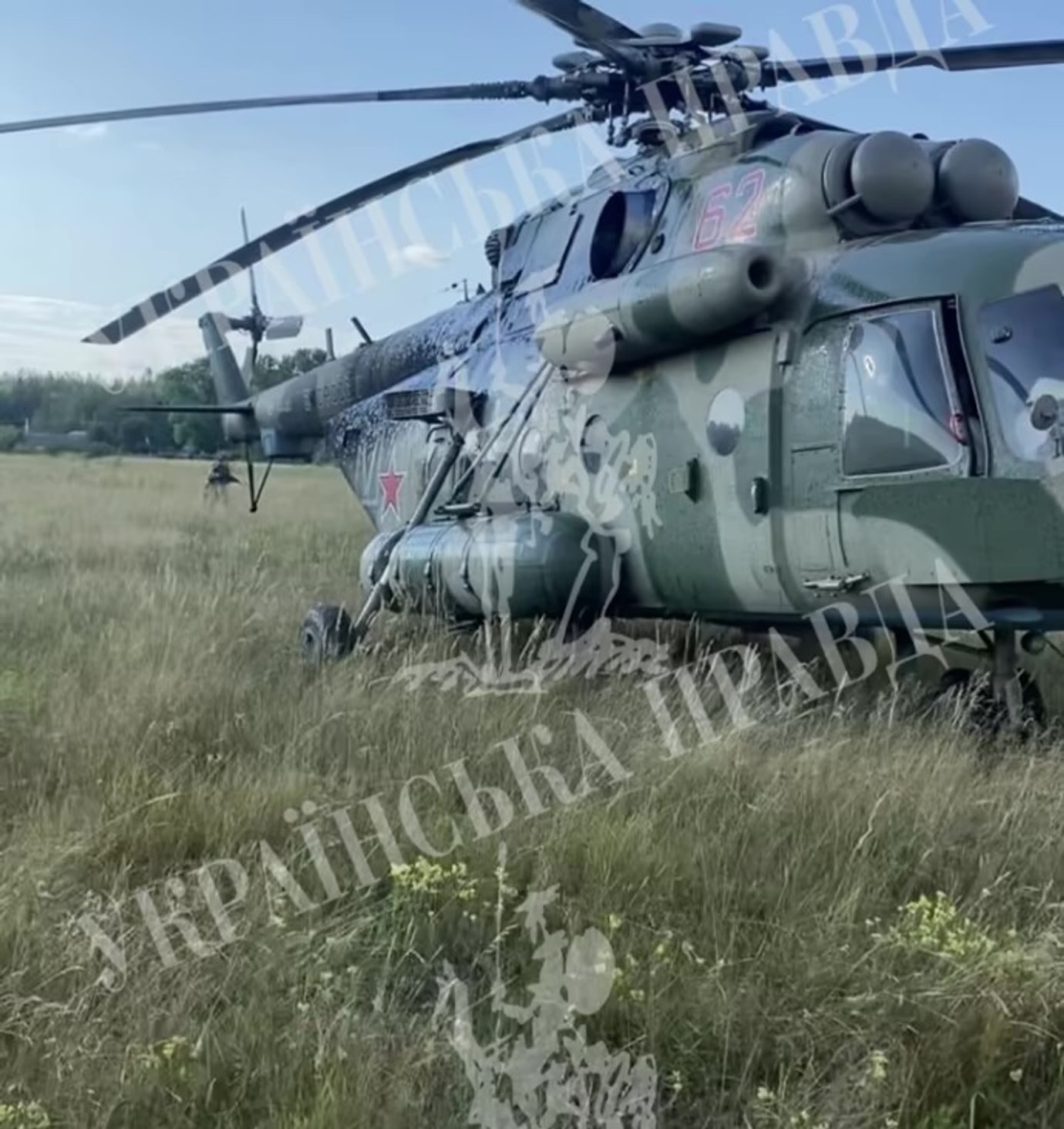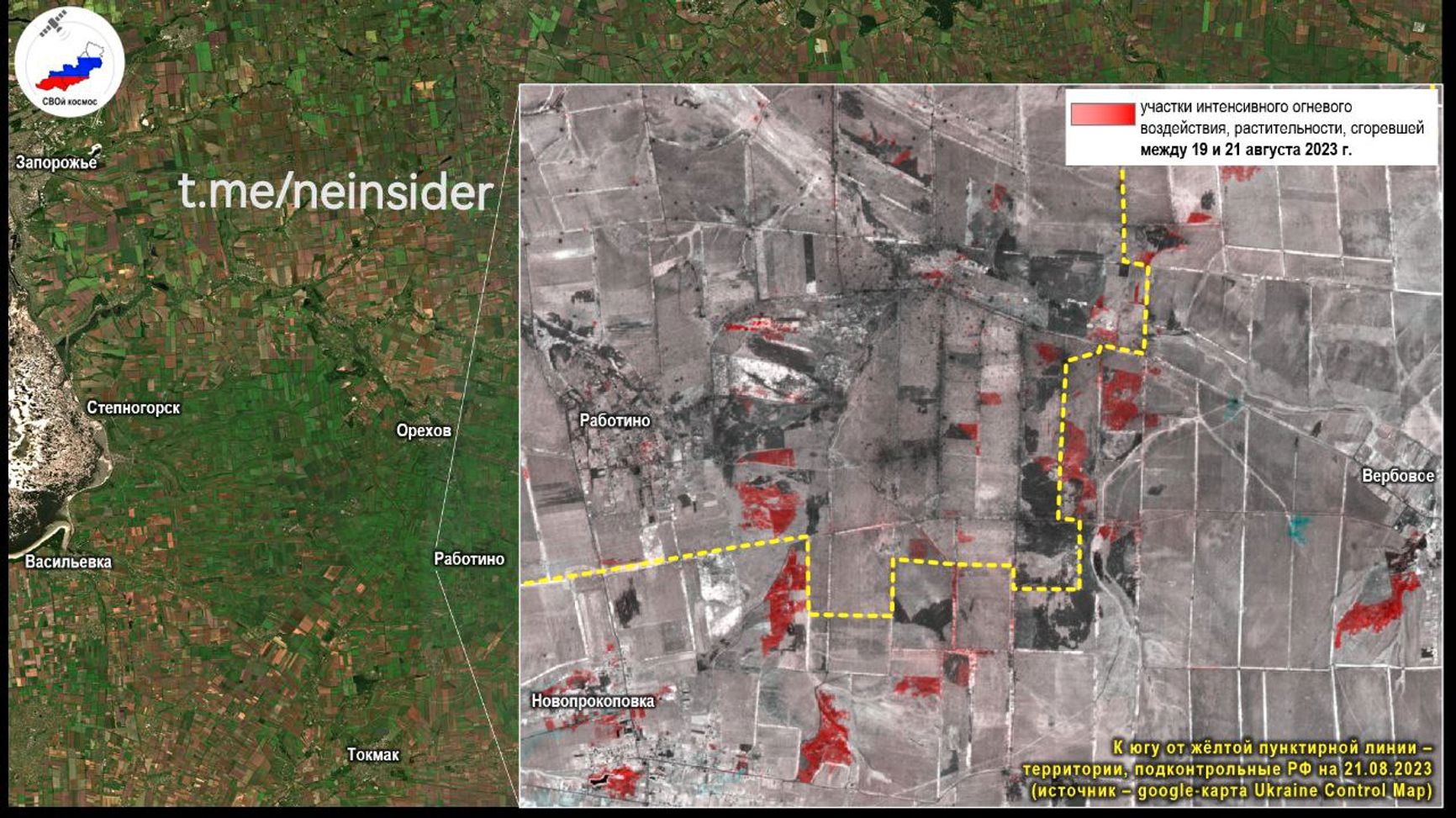
In our today's overview:
· Wagner PMC chief Yevgeny Prigozhin's private jet crashed near Tver, with Prigozhin listed among the passengers.
· A Russian Mi-8 helicopter landed in Ukraine, by mistake or as part of a special ops mission.
· Ukrainian troops are advancing from fully captured Robotyne to Novoprokopivka.
· The West is criticizing the distribution of Ukrainian forces in the counteroffensive.
· Lawrence Freedman, Emeritus Professor of War Studies, urges to refrain from hasty assessment of the Ukrainian campaign.
· Another drone strike on the Russian capital: Moscow City got hit again.
· On the Crimean Peninsula, an S-400 missile launcher was hit.
· Ukraine is testing the Marichka underwater drone with a range of 1,000 kilometers.
Losses
An Embraer Legacy 600 private jet, which belonged to the head of the Wagner PMC Yevgeny Prigozhin, crashed in Russia's Tver Region. Official reports suggest the jet was carrying ten passengers and crew members, including Prigozhin himself. There were no survivors. Several Telegram channels also placed Dmitry “Wagner” Utkin, Wagner co-founder whose call sign inspired the company’s name, among the passengers. In the video of the crash, many noticed the condensation trail of an air defense missile, and the images of the debris presumably feature traces of fragmentation, suggesting that the jet may have been shot down with an air defense weapon.
Telegram channels linked to the Wagner PMC almost immediately started posting eulogies on the passing of “the national hero”. In turn, Fighterbomber, a channel with ties to the Russian Aerospace Forces, reminded that exactly two months before, on June 23, Prigozhin started a mutiny that involved downing six helicopters and an Il-22M plane. Sabotage Assault Reconnaissance Group (DShRG) «Rusich», a Russian neo-Nazi paramilitary unit, posted the following: “Let it be a lesson to all of us. You must always finish what you started.”
Traces of what is believed to be air defense missile fragments on the wreckage of Prigozhin's jet
Traces of what is believed to be air defense missile fragments on the wreckage of Prigozhin's jet
Traces of what is believed to be air defense missile fragments on the wreckage of Prigozhin's jet
A Russian Mi-8AMTSh cargo helicopter has been lured to Ukraine-controlled territory, according to Ukraine's Main Directorate of Intelligence (HUR) as cited by Ukrainska Pravda. According to the publication, the helicopter was carrying parts for Su-27 and Su-30SM fighter jets but ended up in Kharkiv Region in the course of a Ukrainian special ops mission. Two crew members were “eliminated”, and the pilot joined his family in Ukraine (the family was brought from Russia beforehand).

Ukrainian sources add that a subscriber of a popular Russian Air and Space Force-linked Fighterbomber Telegram channel was (emphasis on the past tense) among the crew members.

Meanwhile, Fighterbomber himself offers the following interpretation. The helicopter purportedly “went missing a couple of weeks back” because “the crew lost bearing and crossed the ribbon [the state border between Russia and Ukraine — The Insider]”. The Mi-8AMTSh landed near the village of Poltava in the Kharkiv Region. When the crew realized where they’d landed, they attempted a takeoff but were gunned down in the helicopter on the ground. Two were killed, and the commander was wounded.
The channel’s author suggests “a radio trick” from the Ukrainian side or a navigation system failure and “asks to refrain from spreading other versions because there can’t be any”.
Fighterbomber also verified the authenticity of the helicopter image published by Ukrainska Pravda, adding, however, that the photo was cropped to avoid showing the cockpit with bullet holes, despite the damage that's visible anyway. According to the channel, all of the crew members’ relatives are in Russia.
Here is how Fighterbomber commented on the photo with the channel's logo:
“Judging by the missing pin on the deletion switch cap, the crew managed to launch the system of deleting passwords and codes of state identification and communication systems. They fought till the end.”
Helicopterpilot, a channel linked to the Russian Army Air Force, says that the crew stopped responding during a mission on August 9. The helicopter allegedly landed not far from Vovchansk in Ukraine. Then the channel's source reported a sighting of the helicopter near the village of Poltava. Like Fighterbomber, the author believes the crew members’ families never left Russia.
Pro-Russian military blogger Kirill Fedorov cites “a seasoned Mi-8 pilot”, who asserts that the pilot of the “wayward” helicopter spoke openly of having relatives in Ukraine, and the navigation failure version lacks any credibility.
To remind you, in July 2022, Bellingcat investigator Christo Grozev exposed the Ukrainian secret services’ attempt to recruit Russian air force pilots for hijacking planes. The operation was thwarted and became a double play, in which Russian Federal Security Service officers misled the Ukrainian side. The intel obtained by Russian secret services enabled a massive strike on Ukraine's Kanatove airfield on June 23, 2022, which killed the unit commander and injured 17 servicemen.
At the frontline
Andriy Kovalev, spokesman for the General Staff of the Armed Forces of Ukraine, reports successful advancement south of Robotyne toward Novoprokopivka. Russian pro-war channel Neinsider published a satellite image to assess the intensity of combat near Robotyne based on vegetation changes and thus confirmed the pressure by Ukrainian troops on Novoprokopivka and Verbove.

The Telegram channel of Ukraine's 47th Separate Armored Brigade posted a photo of the Ukrainian flag raised over a partially destroyed school building in Robotyne. Ukrainian Commander-in-Chief Valerii Zaluzhnyi published a video of the same flag. As the Ukrainian OSINT project DeepState remarks, the school is situated on the southern outskirts of the village, so the Ukrainian flag signifies total control of the settlement.
Ukrainian military observer Kostiantyn Mashovets reports that the Ukrainians are making progress toward Russia's main stronghold south of Orikhiv near Novoprokopivka from the north while bypassing it from the northeast.
The New York Times has released an overview of the mistakes made by the Ukrainian command in planning the counteroffensive. The cited sources criticize Ukrainian top commanders for spreading troops and weapons too thin along the frontline instead of pulling them together into a single fist and striking in the south to breach Russia’s defense and cut through the land corridor between Crimea and the Russian mainland before the mud season. That said, American military experts realize that attacking minefields and defense lines will result in huge losses but see no other way. The Ukrainian Commander-in-Chief Valerii Zaluzhnyi is said to have heeded this advice and started pulling troops south.
Meanwhile, Lawrence Freedman, Emeritus Professor of War Studies, has offered his take on the combat situation and the reports of a “failed” counteroffensive that circulate in Western media. He believes it's too early to dismiss the campaign as a failure and that concentrating all of the resources in a single sector may not have yielded the desired result. The expert also thinks that accusing Ukraine of being overly sensitive to losses is surprising considering that cutting personnel losses has been at the heart of the U.S. military strategy for decades. Freedman believes the counteroffensive will continue until the fall, when it may face munitions shortages or logistical challenges, but even if it fails, the Russians are still unlikely to organize a breakthrough of their own.
Mutual strikes and sabotage
Moscow and the Moscow Region have been under drone strikes for six days running. The Moscow City high-rise compound has been hit again. As usual, the Russian Ministry of Defense has reported successfully eliminating three drones, but one of them, although reported to have been “intercepted with an electronic warfare system”, still crashed into a building due to “loss of control”. The blast shattered windows in the buildings adjacent to Moscow City.
Another drone crashed in Khimki outside Moscow. The incident damaged a wall in a private house and caused minor damage to a few more structures. No injuries were reported. According to the VChK-OGPU Telegram channel, the house was hit by a missile launched from a Pantsir-S air defense system. Previously, the Russian MoD often accused Ukraine of damaging its own residential buildings due to a “lack of professionalism” in fending off Russian missile strikes on military facilities.
Independent researcher The Lookout assumes the Russians mostly use electronic warfare to fend off drones instead of shooting them down with air defense weapons, because of their small size and payload. If an air defense missile fails or misses, it could cause way more damage than a drone – which is what reportedly happened in the Moscow Region.
In the village of Lavy in Russia's Belgorod Region, munitions dropped from a drone killed three people. According to the local authorities, the drone dropped two grenades on the grounds of a health resort and then three more bombs.
The HUR [Ukrainian military intelligence] released a video of hitting a Russian air defense system near Olenivka on Cape Tarkhankut in Crimea.
The HUR identifies the eliminated target as an S-400 Triumf. Notably, observation and, most likely, target marking of the air defense system were performed with a drone at a distance of 130 kilometers from the nearest Ukrainian ground positions.
Russian pro-war channel Rybar believes the strike damaged an S-300 launcher, and the weapon used was the naval-launched version of the high-precision Brimstone II missile. As evidence, the channel cites the small impact of the initial detonation and the long range of the weapon. The strike may have been recorded with a Tekever AR5 or a V-BAT drone, which Ukraine adopted for reconnaissance purposes six weeks ago.
Importantly, the day before, Kyrylo Budanov, chief of the HUR, announced strikes on Crimea-based targets.
Earlier, The Insider covered the motives and the possible outcome of Ukraine's efforts to isolate Crimea with long-range weapons and sea drones.
The HUR also shared a video of Ukrainian motorboats coming under attack in the Black Sea, which the Russian MoD reported the day before. The Russian side claimed to have destroyed a Ukrainian vessel near Snake Island. However, the HUR reported that the motorboat escaped and the missile launched by a Russian fighter jet missed the mark. In turn, Ukrainian servicemen allegedly fired at the jet and caused damage. Other videos circulating in Ukrainian channels supposedly document the missile launch and the retreat of one of the boats under aircraft cannon fire. Interestingly, Russian sources reported hitting three Ukrainian motorboats advancing toward Crimea, whereas the HUR only mentions one.
There have been new developments concerning the thwarted Ukrainian sabotage attack on Russia's Bryansk Region. Two days ago, Governor Alexander Bogomaz expressed his gratitude to the border guards, troops, and Russian Guard fighters. Today, Russian sources reported the loss of four troops and a border guard, 23-year-old Senior Lieutenant Alexander Nikolaev, in the Bryansk Region.

The Ukrainian Air Force Command reports intercepting 11 Shahed suicide drones on the night of August 23: nine in the Odesa Region and two in Zaporizhzhia. Overall, Russia launched as many as 20 Shaheds at Ukraine.
Suicide drones also hit targets in the Odesa Region. According to the local authorities, they damaged civil infrastructure and a few logistics and manufacturing warehouses.
The town of Romny in Sumy Region also sustained a drone strike. The attack tore a school building to the ground, killing four civilians: the headmaster, their deputy, a secretary, and a librarian. The city sounded an air raid alert in time, but the school staff failed to move to the shelter.

Weapons and military equipment
The President of Lithuania pledged to supply Ukraine with NASAMS missile launchers as early as next month. The military aid package will also include surface-to-air missiles, anti-drone systems, and other equipment.
Taking a leaf out of ex-Roscosmos chief Dmitry Rogozin’s book, certain Ukrainian officers have been launching individual BM-21 «Grad” rockets at the enemy. Unlike more efficient Ukrainian DIY mini-MRLS, this system evidently lacks any semblance of precision.
Ukrainian MP Yurii Mysiagin has released a video of Ukrainian troops testing the Marichka underwater drone. Designed by volunteers, the drone is said to have a range of up to 1,000 kilometers.
For the key developments of August 22, read our previous digest (in Russian): Ukrainians advancing toward Verbove, Russian Commander-in-Chief resurfaces, Ukrainian UAVs with claws kidnapping Russian wounded. What happened on the frontline on August 22?